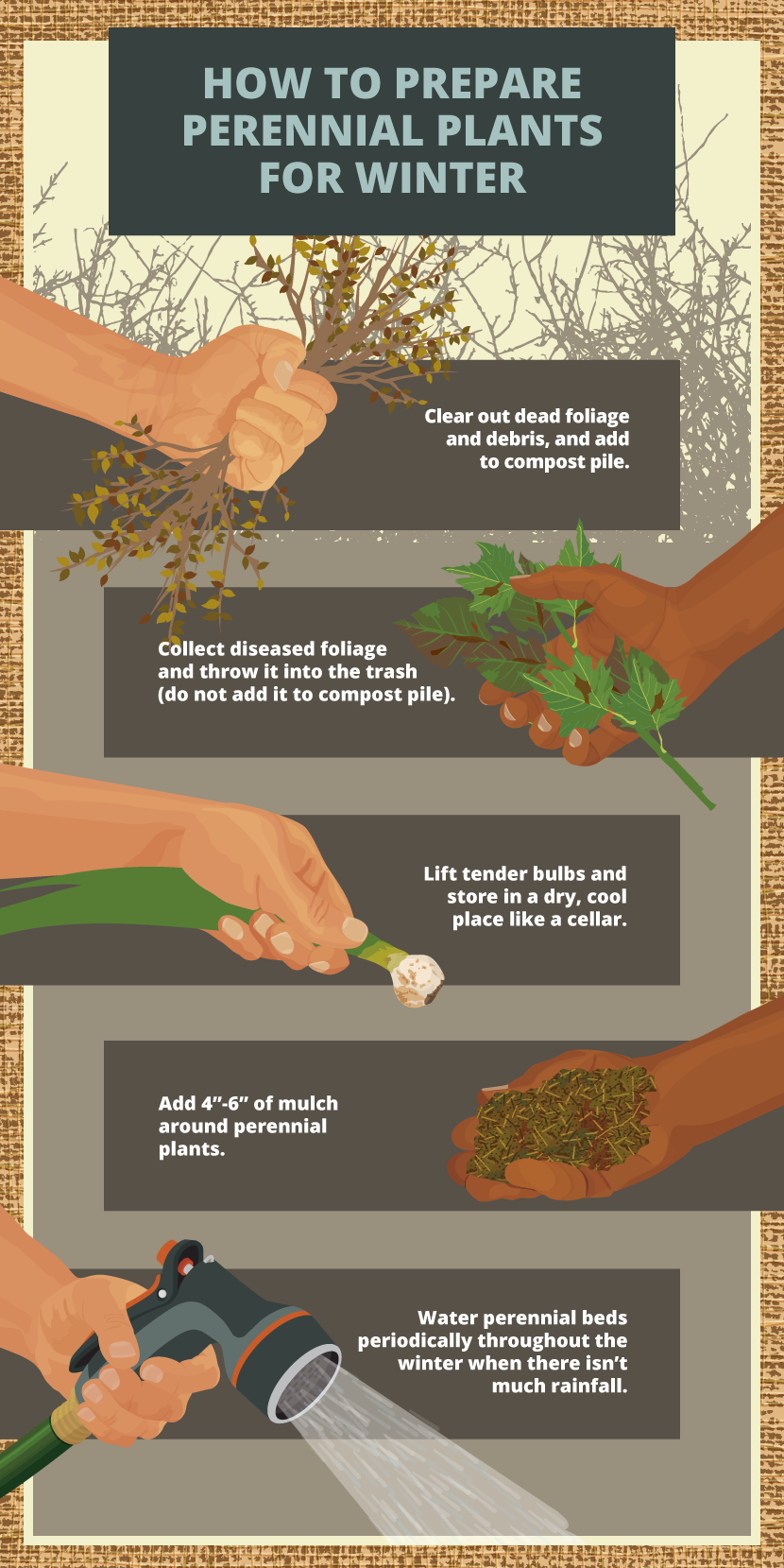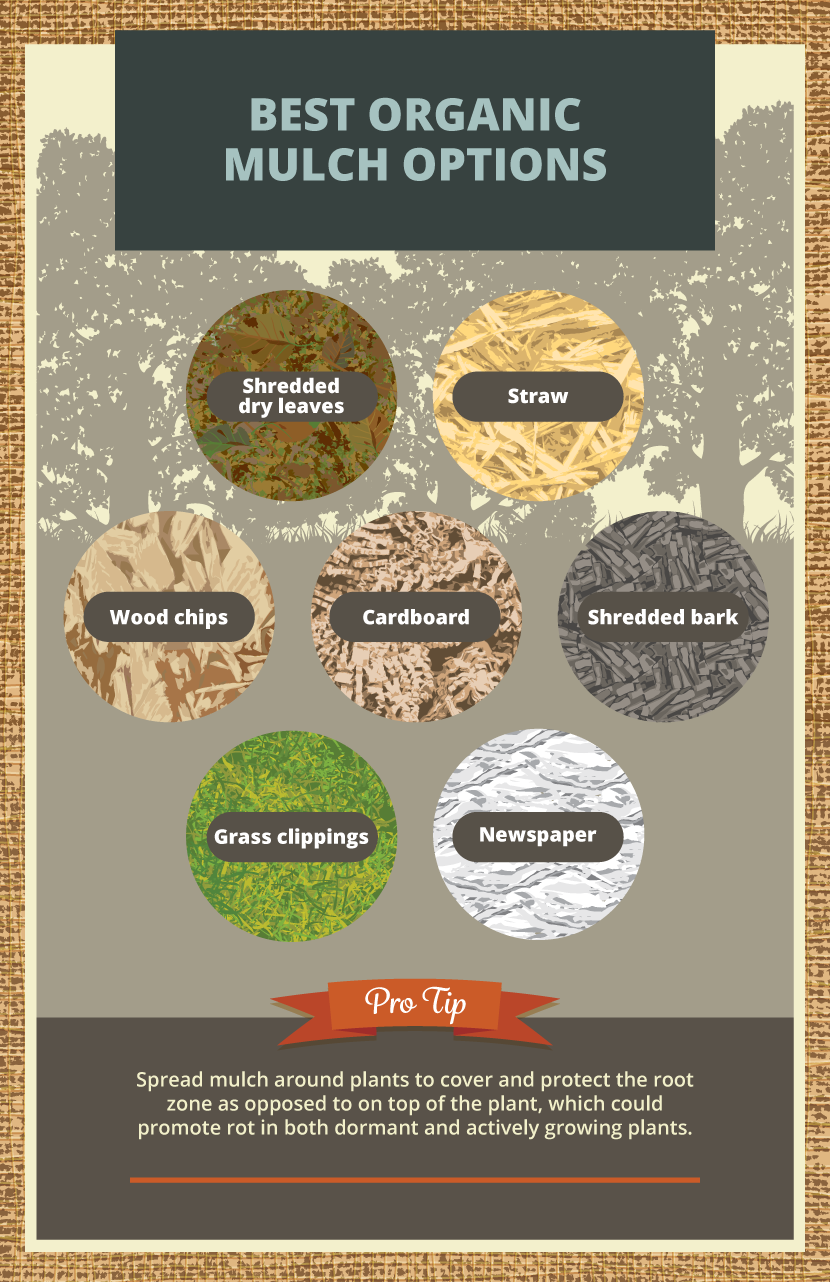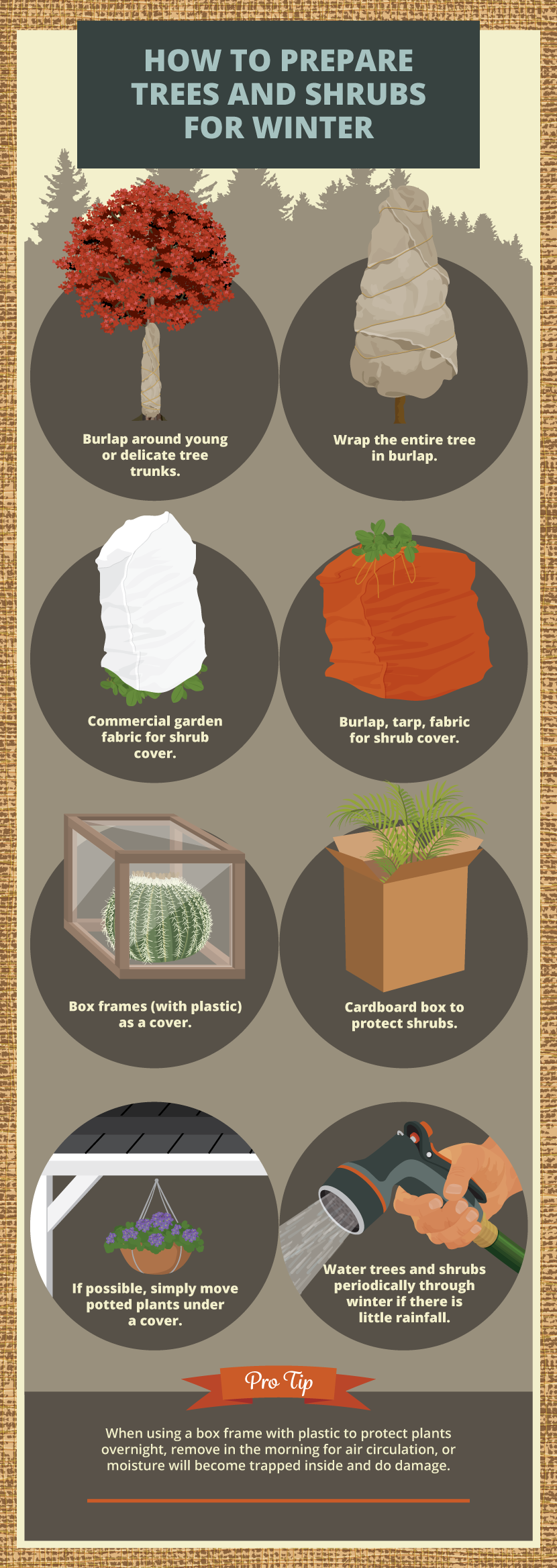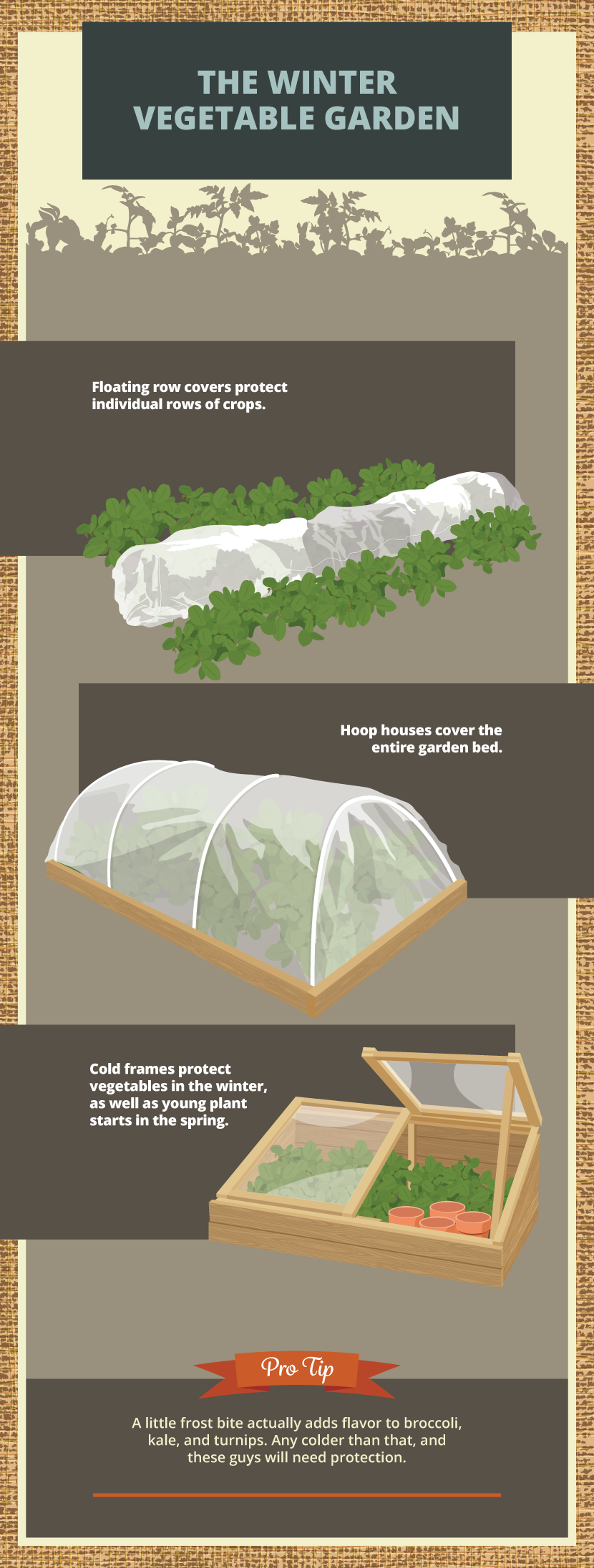
Putting the Garden to Bed
You have probably heard this term before. If you’re unclear on what this means, it’s basically about cleaning up garden beds and covering (or otherwise protecting) everything that isn’t an annual. Annual plants, including most vegetables, will be killed once a hard frost blows through. It’s their biological destiny as they have already reproduced for next year by making seeds.
Unless you’ve planted something that isn’t hardy in your zone, perennials, trees, and shrubs go dormant for the winter instead of dying. They may look dead as a doornail, but they’re simply laying low until the soil warms up and the days get long. Don’t be fooled by their silence – there are plenty of things going on during the cold months.
Perennials, trees, and shrubs are focusing on strengthening their roots by taking in nutrition from the soil. Even compost piles will continue to break down all winter. Sure, the microbes and redworms work at a much slower pace, but they continue to work nonetheless.
Clean Up and Repair
All dead foliage should be removed from garden beds. If there are plants that have died of a disease, such as verticillium wilt on tomato plants, bag them up and send them out with the rubbish. Do not add diseased foliage to your compost pile! However, leaves, stems, and spent flowers that have died due to the plants’ natural life cycle or a killing frost can go into your compost pile. When your deciduous trees drop their leaves, don’t throw them out. Add them to the compost pile or shred them to use as mulch instead.
Autumn is the best time to make repairs to your beds, trellises, greenhouses, tools, etc., and you will thank yourself for the forethought when next season comes around. It’s also a terrific time to create a new garden bed that will be ready to go come Spring.
Prepare and Protect Perennials for Winter
Winter prep strategy may or may not be useful for you depending on your climate. If you live in a growing zone that sees very little (or zero) snow, you can afford to take a more relaxed approach. That said, even if a plant is considered “cold hardy,” if you expect a cold snap (hard frost), some frost protection can make all the difference. If you live in an area that is known for its impressive snow levels, consider using every technique available to get your plants safely from Autumn through to Spring. The first (and best) thing you can do is choose plants that thrive in your growing zone. If you aren’t sure what zone you’re in, you might need to do a bit of homework!
Cold weather protection is going to involve preventing frost or snow from settling on plant foliage. There are several ways to accomplish this:
Mulch is a perennial’s best friend, especially during the cold months. Mulch with compost, dry leaves, straw, wood chips, cardboard, shredded bark, grass clippings, or newspaper 4 to 6 inches around the base of the plants in Autumn. If Spring arrives early and brings unusually warm temperatures, feel free to pull the mulch away from the plants a bit. Otherwise, don’t remove it until the last frost date in your area has passed.
Tender bulbs such as begonia, dahlia, ranunculus, canna, caladium, gladiola, freesia, and gladiola should be gently lifted from the garden and stored in a dry, cool space for the winter to be replanted next season. Daffodils, crocus, tulip, and hyacinth are good examples of hardy bulbs that will tolerate a hard frost.

Prepare and Protect Trees and Shrubs for the Winter
Commercial garden fabric, burlap, or tarps make useful winter protection. Ideally, these items should shield the plants without touching them. The materials become wet and then freeze, which can damage the plant underneath. So, using stakes or a frame to hold the fabric around the plants is your best bet. Any type of cover used should go all the way down to the root zone.
Sheets, blankets, and drapes can be recycled and used as plant blankets as well.
Plastic can be used in place of a heavier material, but again, be sure to use a frame to keep the plastic off the plants. One way to use plastic is to make a boxed wood frame and staple the plastic onto the sides (leaving the bottom open). Place the box over the plant at night and remove it during the day for warmer temperatures.
Cardboard boxes and layers of newspapers can be used as frost protection for shrubs.
Potted plants might be easily pulled under an awning or porch cover for protection. If the container is too heavy to move, wrap burlap or a tarp around them.
Both young and delicate trees (like citrus) can be protected by wrapping burlap around their trunks. In fact, you can even wrap entire trees in burlap.

What About Winter Vegetables?
There’s no need to put a garden to bed if you’re planting winter vegetables. Winter is often considered downtime as far as gardening goes, when the truth is that cool-weather crops such as spinach, broccoli, kale, cabbage, cauliflower, turnips, Swiss chard, Brussels sprouts, kohlrabi, and lettuce are happy to produce for you. Start them by seed in the early Autumn so that they are well on their way once the cold weather sets in.
In areas where the Winters are mild, some vegetable plants such broccoli, kale, and turnips won’t need protection from cold snaps. In fact, a little frostbite adds more flavour to these plants.
Floating Row Covers are made from garden fabric laid gently on and around individual row crops.
Hoop Houses are a larger version of the row covers and enclose the entire garden bed. PVC pipe can be attached to the outside of the bed at even intervals. A polyethylene material is then tossed over the structure. To help keep the plastic in place, set bricks or rocks along the bottom of the material to secure it to the ground.
Cold Frames are another simple structure that protects vegetables in the winter and plants starts in the spring is a cold frame. Cold frames are rectangular and look like very short greenhouses that don’t have shelves or heat. Plants are in pots or planted directly on the ground. To take advantage of winter sunlight, the top of the cold frame is made of plastic or glass and opens like a door for good air circulation.

Winter Watering
Please don’t forget to water your perennials, trees, and shrubs in the winter if you haven’t had much rain. They obviously won’t need as much watering in the cold months as they would the warm or hot ones. They should go into winter well-watered for root protection, as plant roots stay warmer when water is present because it traps heat. Water them deeply early in the morning a few times a month.
Speaking of root protection, a thick layer of mulch spread around plants in perennial beds as well as shrubs and trees will help protect the roots for the winter by keeping the soil temperature even. We may not be able to beat Mother Nature at a game that she designed. But we have our proven strategies to stack the odds in our favor and have most of our plants live to see another spring.

